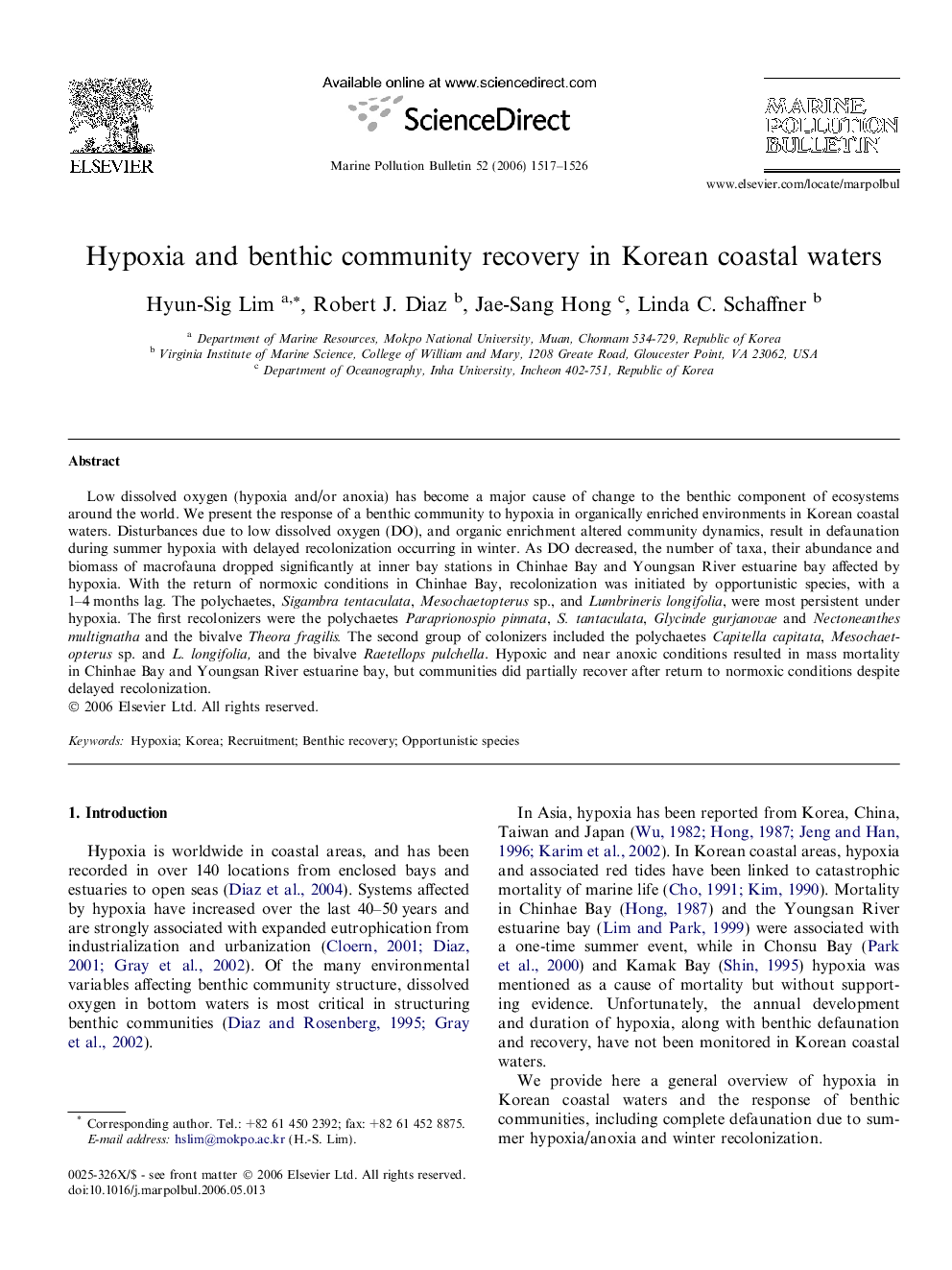| Article ID | Journal | Published Year | Pages | File Type |
|---|---|---|---|---|
| 4478068 | Marine Pollution Bulletin | 2006 | 10 Pages |
Low dissolved oxygen (hypoxia and/or anoxia) has become a major cause of change to the benthic component of ecosystems around the world. We present the response of a benthic community to hypoxia in organically enriched environments in Korean coastal waters. Disturbances due to low dissolved oxygen (DO), and organic enrichment altered community dynamics, result in defaunation during summer hypoxia with delayed recolonization occurring in winter. As DO decreased, the number of taxa, their abundance and biomass of macrofauna dropped significantly at inner bay stations in Chinhae Bay and Youngsan River estuarine bay affected by hypoxia. With the return of normoxic conditions in Chinhae Bay, recolonization was initiated by opportunistic species, with a 1–4 months lag. The polychaetes, Sigambra tentaculata, Mesochaetopterus sp., and Lumbrineris longifolia, were most persistent under hypoxia. The first recolonizers were the polychaetes Paraprionospio pinnata, S. tantaculata, Glycinde gurjanovae and Nectoneanthes multignatha and the bivalve Theora fragilis. The second group of colonizers included the polychaetes Capitella capitata, Mesochaetopterus sp. and L. longifolia, and the bivalve Raetellops pulchella. Hypoxic and near anoxic conditions resulted in mass mortality in Chinhae Bay and Youngsan River estuarine bay, but communities did partially recover after return to normoxic conditions despite delayed recolonization.
